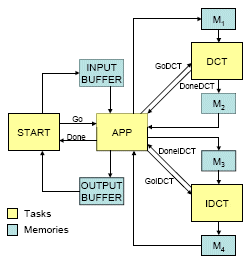H.263v2 (also known as H.263+ or as the 1998 version of H.263) is the informal name of the second edition of the ITU-T H.263 international video coding standard. It retained the entire technical content of the original version of the standard, but enhanced H.263 capabilities by adding several annexes which can substantially improve encoding efficiency and provide other capabilities (such as enhanced robustness against data loss in the transmission channel). The H.263+ project was ratified by the ITU in February 1998. It added the following Annexes:
H.263v2 also added support for flexible customized picture formats and custom picture clock frequencies. Previously the only picture formats supported in H.263 had been Sub-QCIF, QCIF, CIF, 4CIF, and 16CIF, and the only picture clock frequency had been 30000/1001 (approximately 29.97) clock ticks per second.
H.263v2 specified a set of recommended modes in an informative appendix (Appendix II, since deprecated):

Annex I - Advanced INTRA Coding mode
Annex J - Deblocking Filter mode
Annex K - Slice Structured mode
Annex L - Supplemental Enhancement Information Specification
Annex M - Improved PB-frames mode
Annex N - Reference Picture Selection mode
Annex O - Temporal, SNR, and Spatial Scalability mode
Annex P - Reference picture resampling
Annex Q - Reduced-Resolution Update mode (see implementors' guide correction as noted below)
Annex R - Independent Segment Decoding mode
Annex S - Alternative INTER VLC mode
Annex T - Modified Quantization mode H.263v3 (H.263++) and Annex X
H.263 video can be decoded with the free LGPL-licensed libavcodec library (part of the ffmpeg project) which is used by programs such as ffdshow, VLC media player and MPlayer.
Most Flash Video content (as used on sites such as YouTube, Google Video, MySpace etc.) is encoded in this format, though some sites now use VP6 encoding, which is supported since Flash 8.
The original version of the RealVideo codec was based on H.263 up until the release of RealVideo 8.
No comments:
Post a Comment